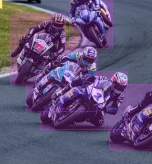In 2023, there are several image annotation tools that stand out for their advanced features, ease of use, and competitive pricing. These tools are designed to streamline the annotation process and enhance the efficiency of any annotation workflow. In this article, we’ll be covering the six best image annotation tools in 2023, along with their key features and pricing information, as well as some considerations when choosing the right image annotation tool for your needs.
How to Evaluate Image Annotation Tools?
When evaluating image annotation tools, there are several important factors to consider to ensure you choose the right tool for your data annotation needs.
First and foremost, compatibility with different data formats is a great feature to have. Look for annotation tools that support a wide range of file formats, including popular image formats like JPEG and PNG, as well as video formats. This will ensure that you can easily work with your existing data and integrate the annotations seamlessly into your workflow.
Ease of use is the second consideration to keep in mind. Look for annotation tools that offer a user-friendly interface and intuitive workflows. The tool should make it easy for your annotation team to quickly and accurately annotate images without any technical hurdles. This will save you time and ensure that your annotations are of high quality.
Support is also an important factor to evaluate. Ensure that the annotation tool provider offers responsive and helpful customer support. This will be valuable if you encounter any issues or have questions about the tool’s functionality.
Finally, take into account the pricing of each tool and whether a free tool has everything you need. Compare the pricing models of different annotation tools and consider the value you will receive for the cost. Look for options that offer flexible pricing plans to accommodate your budget and data annotation needs.
By evaluating these factors, you can find the right image annotation tool that meets your requirements and helps you efficiently annotate your data for various vision projects. If you need further assistance in selecting the right tool or have any specific annotation needs, feel free to reach out to us as we are here to help!
Image Annotation Tools: Our Top Picks

To help you make an informed decision, we have compiled a list of our top picks for image annotation tools. These tools have been carefully selected based on their compatibility with various data formats, ease of use, customer support, and pricing. By choosing one of these top picks, you can trust that you will have access to a reliable and efficient annotation tool that will streamline your annotation process and enhance the quality of your labeled data.
Whether you need basic annotation types, support for video annotations, or advanced features like model-assisted labeling, our top picks offer a wide range of functionalities to meet your specific requirements. Reach out to us today to discuss your data annotation needs and let us help you choose the perfect tool for your project.
CVAT
CVAT, an open-source image annotation tool, is a top choice for data annotation needs. It offers a wide range of key features that streamline the annotation processes for various tasks. With CVAT, users can efficiently perform tasks like object detection, semantic segmentation, and video annotation.
One notable feature of CVAT is its automated labeling integration, which enhances productivity by reducing the manual annotation workload. Additionally, CVAT seamlessly integrates with data storage tools, allowing users to manage their annotated datasets effectively.
It comes in two versions: a self-hosted version and a paid version. The self-hosted version is available for free, making it a cost-effective solution for small-scale annotation projects. The paid version offers additional benefits and support, making it a great choice for larger and more complex annotation projects.
In summary, CVAT is an open-source image annotation tool that offers key features such as support for various annotation tasks, automated labeling integration, and integration with data storage tools. The availability of both a free self-hosted version and a paid version caters to different annotation needs and project scales.
Labelbox
Labelbox is an exceptional annotation tool that offers a user-friendly visual interface for annotating various types of data, including images, videos, and documents.
One standout feature of Labelbox is its ability to export annotations in different formats, allowing users to seamlessly integrate their annotated data into their preferred workflows. Whether you need your annotations in JSON, CSV, or any other format, Labelbox has you covered.
Labelbox also offers robust collaboration tools that enable teams to review and manage large datasets with ease. Its real-time collaboration features allow multiple annotators to work simultaneously, streamlining annotation workflows and reducing project timelines.
Choosing the right annotation tool is crucial for any data annotation project, and Labelbox stands out as a trusted and reliable choice. With its intuitive visual interface, collaborative capabilities, and flexible annotation export options, Labelbox empowers data annotation teams to streamline their processes and achieve accurate results.
Scale AI
Scale AI is a versatile image annotation tool that offers a comprehensive suite of data annotation tools for images, text, video, and audio. With Scale AI, users can efficiently curate and annotate datasets, empowering them to train highly accurate models.
A key feature of Scale AI is its Scale Data Engine, which enables users to easily manage dataset curation and annotation. The tool also allows annotations to be converted into various formats, making them compatible with different model training frameworks.
In addition to its rich annotation capabilities, Scale AI offers integration for requesting assistance from external annotators. This feature ensures that users have access to a large pool of experienced annotators, enabling them to scale their annotation tasks efficiently.
Scale AI provides two pricing tiers, offering flexibility for different project requirements and budgets. This ensures that users can choose the option that best suits their needs.
With its comprehensive suite of annotation tools, dataset curation capabilities, and integration for external annotators, Scale AI is a powerful image annotation tool that caters to a wide range of data annotation needs.
Make Sense
Make Sense is a highly efficient image annotation tool that offers a wide range of features and functionalities. One of its standout advantages is that it is an open-source tool, which means it is readily accessible online without any installation required. This makes it extremely convenient for data annotation professionals as they can access the tool from anywhere and on any operating system.
Make Sense is designed to simplify the annotation process by incorporating AI models such as the single-shot detector (SSD) and PoseNet. These models automate the labeling tasks and provide intelligent suggestions, saving valuable time and effort. By leveraging these AI models, users can achieve faster and more accurate annotations.
With Make Sense’s online annotation capabilities, annotation teams can collaborate in real-time, allowing for seamless workflow management and efficient team communication. The tool also offers a variety of annotation types, including bounding boxes, semantic segmentation, and 3D cuboids, catering to a wide range of annotation needs.
Make Sense’s user-friendly interface and compatibility with various operating systems make it a popular choice for professionals in the data annotation industry. Its open-source nature ensures that users have the flexibility to customize and adapt the tool to their specific requirements.
When considering the choice of an annotation tool, Make Sense stands out as a reliable and efficient option, particularly for those looking for an open-source tool that offers online annotation capabilities and AI models for labeling automation.
VGG Image Annotator
This open-source tool offers a wide range of features that cater to the needs of data annotation professionals.
One of the key highlights of VIA is its support for manual annotation of both image and video data. With VIA, annotation teams can effortlessly label objects and regions of interest, ensuring accurate and high-quality annotations. The tool’s lightweight design makes it easy to navigate and use, even for users with limited technical knowledge.
VIA’s simple user interface adds to its appeal. Additionally, VIA can be run offline without the need for installation, making it a versatile option for annotation tasks that require mobility. Its compatibility with various web browsers ensures that users can access and work with it across different platforms and operating systems.
With its combination of user-friendly features, open-source nature, and support for manual annotation, VGG Image Annotator is a valuable tool for data annotation professionals seeking a reliable and versatile option.
VoTT
Developed by Microsoft, VoTT stands for Visual Object Tagging Tool and is a comprehensive solution for annotating image directories or stand-alone videos.
One of the key features of VoTT is its flexibility in exporting tags and assets to popular formats like CNTK, Tensorflow, and YOLO. This compatibility ensures that annotated data can seamlessly be used in various machine learning frameworks for model training and development. Moreover, VoTT provides the option to import and export data from both local and cloud storage providers, allowing for easy collaboration and data management.
Another standout feature of VoTT is its ability to run and validate trained object detection models on new videos. This functionality enables annotation teams to quickly test and evaluate the performance of their models on different datasets. The user-friendly interface of VoTT makes it easy to navigate and utilize its powerful annotation capabilities.
Overall, VoTT is a reliable and efficient image annotation tool that offers flexibility, compatibility, and ease of use.
Aya Data: Your Data Annotation Partner
While there are numerous popular image annotation tools available, selecting the right one depends on your specific needs and objectives. The right tool should not only provide high-quality annotations, but also enhance efficiency, scalability, and accuracy.
At Aya Data, we are committed to delivering high-quality, tailored solutions that meet your unique requirements. Don’t hesitate to reach out to us for any inquiries or assistance. We are dedicated to helping you navigate through the world of data annotation and achieve your goals.






